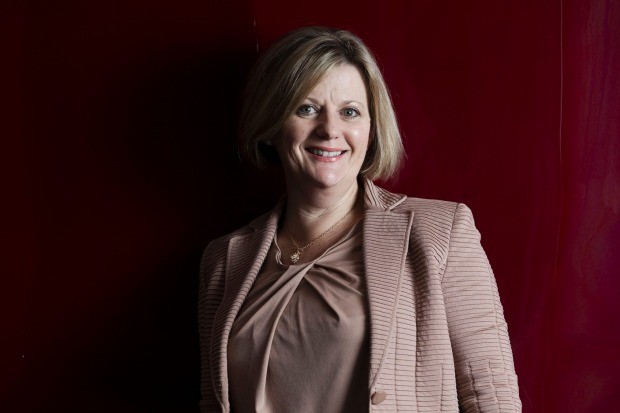How to choose the right bond fund for 2014
Post on: 22 Апрель, 2015 No Comment

Story Highlights
- Short-term rates arent going anywhere this year Long-term rates will rise Inflation will remain low
When you stand outside at night and gaze at the stars, your mind turns to the big questions: What is our significance in the bejeweled vastness of space? Are there others in far-off planets who feel and think as we do? What will the yield on the 10-year Treasury note be this time next year?
Predicting interest rates is about as difficult as predicting an invasion of giant earwigs from Saturn. But if you own a bond fund – and millions of you do – then you should think about at least the direction, if not the level, of interest rates.
The Federal Reserve controls short-term interest rates, by controlling the fed funds rate. The fed funds rate, currently 0% to 0.25%, is the rate at which Fed-member banks lend to each other, typically overnight.
Why should you care? Because most savings rates, such as those offered by banks, track the fed funds rate pretty closely. The highest-yielding three-month bank CD, for example, currently pays just 0.45%, and the average money market fund pays 0.01%.
The bad news: Those rates are going nowhere this year. We don’t expect a change in fed funds rates, says Michael Englund, chief economist for Action Economics. Most economists don’t expect the Fed to raise short-term interest rates until the unemployment rate falls below 6.5%, which might not happen until 2015. If you’re a saver and can’t stand the thought of risk, you’re simply going to have to wait until next year for higher rates.
Until recently, the Fed didn’t control longer-term interest rates, such as the yield on the bellwether 10-year Treasury note. The Fed’s bond-buying program, called quantitative easing, or QE, changed that. By purchasing $85 billion in Treasuries and mortgage-backed securities every month, the Fed has kept long-term interest rates below what they would normally be.
At the Fed’s latest meeting, however, the central bank announced that it would taper back QE and buy fewer long-term securities this month. Presumably, the QE program will cease altogether by the end of this year. And that, in turn, could mean that yields on the 10-year note will rise. How much?
Mark Zandi, chief economist for Moody’s Analytics, thinks the 10-year T-note yield will inch up to 3.75% by the end of the year from its current 2.97%. Englund’s estimate: 3.5%. Less bond-buying by the Fed is just one reason why rates should creep up.
Another is a rising economy. If gross domestic product grows and Congress does nothing to cripple the nation’s credit rating, the economy could grow at 3% a year this year, vs. 2.8% in 2012 and 1.8% in 2011. On an annualized basis, GDP grew at a 4.1% in the third quarter, according to the Bureau of Economic Analysis.
A 3.75% or 3.5% 10-year T-note yield probably isn’t enough to derail the housing rebound, Englund says: He expects mortgage rates to hit 5.1% to 5.25% at the end of 2014, vs. 4.51% the week of Jan. 9, according to mortgage giant Freddie Mac.

What does all this mean for a bond investor? First, that the trend of interest rates is up, and that’s a bad thing for bonds. Bond prices fall when interest rates rise, and at current levels, your interest payments won’t offset your bond fund’s price losses.
When rates rise, long-term bond funds get hurt worse than short-term ones. For example, the 10-year Treasury note ended 2012 at 1.76% and climbed to 3.03% by the end of the year. The average long-term U.S. Treasury bond fund lost 6.7% last year, including reinvested interest, according to Lipper, which tracks the funds.
If you’re worried about rising interest rates, you can move to a shorter-term fund. The average short-term Treasury fund dropped 0.75% last year, Lipper says. Ultrashort funds actually gained 0.44%.
You might also consider moving to funds that own lower-quality bonds. Bond investors will push prices down if they think the odds of a default increase. But in a rising economy, the odds of payback increase – and so do the prices of previously shaky bonds.
Want to know how a pro is positioning his bond portfolio? Ford O’Neil, manager of Fidelity Total Bond (FTBFX), can invest in pretty much whatever type of bonds worldwide he thinks are good values. The fund has beaten 85% of its peers the past five years.
O’Neil is keeping the fund largely in short to intermediate-term bonds, and looking for bonds whose prices will improve as the economy does. If the economy is improving, the probability of default lessens, he says. He’s avoiding Treasury Inflation-Protected Securities, or TIPS, because he sees little risk of inflation in the near future.
So the best advice for bond fund investors this year: Stay short, and consider corporate bond funds, rather than Treasuries. For example, short-term corporate bond funds gained 0.57% last year. The funds also charge less than 0.5% a year in expenses, because at these rates, you don’t want to pay too much for a bond fund.
You won’t get rich with these funds, and you won’t get an enormous yield. But if you’re looking for an investment that could eventually offer higher yields – and could offset the effects of a stock tumble – then these are the funds for you. Now you can move on to weightier questions, such as whether there are interest rates on Mars.














